 The UN’s Intergovernmental Panel on Climate Change (IPCC) has just published the first part of its latest seven-yearly Assessment Report (AR6) on global warming and its consequences (see video summary). The report was prepared by 234 scientists from 66 countries and endorsed by 195 governments. Its forecasts are stark. World temperatures, already 1.1C above pre-industrial levels, will continue to rise. This will bring further rises in sea levels and more extreme weather conditions with more droughts, floods, wildfires, hurricanes and glacial melting.
The UN’s Intergovernmental Panel on Climate Change (IPCC) has just published the first part of its latest seven-yearly Assessment Report (AR6) on global warming and its consequences (see video summary). The report was prepared by 234 scientists from 66 countries and endorsed by 195 governments. Its forecasts are stark. World temperatures, already 1.1C above pre-industrial levels, will continue to rise. This will bring further rises in sea levels and more extreme weather conditions with more droughts, floods, wildfires, hurricanes and glacial melting.
The IPCC looked at a number of scenarios with different levels of greenhouse gas emissions. Even in the most optimistic scenarios, where significant steps are taken to cut emissions, global warming is set to reach 1.5C by 2040. If few or no cuts are made, global warming is predicted to reach 4.4C by 2080, the effects of which would be catastrophic.
 The articles below go into considerable detail on the different scenarios and their consequences. Here we focus on the economic causes of the crisis and the policies that need to be pursued.
The articles below go into considerable detail on the different scenarios and their consequences. Here we focus on the economic causes of the crisis and the policies that need to be pursued.
Global success in reducing emissions, although partly dependent on technological developments and their impact on costs, will depend largely on the will of individuals, firms and governments to take action. These actions will be influenced by incentives, economic, social and political.
Economic causes of the climate emergency
The allocation of resources across the world is through a mixture of the market and government intervention, with the mix varying from country to country. But both market and government allocation suffer from a failure to meet social and environmental objectives – and such objectives change over time with the preferences of citizens and with the development of scientific knowledge.
 The market fails to achieve a socially efficient use of the environment because large parts of the environment are a common resource (such as the air and the oceans), because production or consumption often generates environmental externalities, because of ignorance of the environmental effects of our actions, and because of a lack of concern for future generations.
The market fails to achieve a socially efficient use of the environment because large parts of the environment are a common resource (such as the air and the oceans), because production or consumption often generates environmental externalities, because of ignorance of the environmental effects of our actions, and because of a lack of concern for future generations.
Governments fail because of the dominance of short-term objectives, such as winning the next election or appeasing a population which itself has short-term objectives related to the volume of current consumption. Governments are often reluctant to ask people to make sacrifices today for the future – a future when there will be a different government. What is more, government action on the environment which involves sacrifices from their own population, often primarily benefit people in other countries and/or future generations. This makes it harder for governments to get popular backing for such policies.
Economic systems are sub-optimal when there are perverse incentives, such as advertising persuading people to consume more despite its effects on the environment, or subsidies for industries producing negative environmental externalities. But if people can see the effects of global warming affecting their lives today, though fires, floods, droughts, hurricanes, rising sea levels, etc., they are more likely to be willing to take action today or for their governments to do so, even if it involves various sacrifices. Scientists, teachers, journalists and politicians can help to drive changes in public opinion through education and appealing to people’s concern for others and for future generations, including their own descendants.
Policy implications of the IPCC report
 At the COP26 meeting in Glasgow in November, countries will gather to make commitments to tackle climate change. The IPCC report is clear: although we are on course for a 1.5C rise in global temperatures by 2040, it is not too late to take action to prevent rises going much higher: to avoid the attendant damage to the planet and changes to weather systems, and the accompanying costs to lives and livelihoods. Carbon neutrality must be reached as soon as possible and this requires strong action now. It is not enough for government to set dates for achieving carbon neutrality, they must adopt policies that immediately begin reducing emissions.
At the COP26 meeting in Glasgow in November, countries will gather to make commitments to tackle climate change. The IPCC report is clear: although we are on course for a 1.5C rise in global temperatures by 2040, it is not too late to take action to prevent rises going much higher: to avoid the attendant damage to the planet and changes to weather systems, and the accompanying costs to lives and livelihoods. Carbon neutrality must be reached as soon as possible and this requires strong action now. It is not enough for government to set dates for achieving carbon neutrality, they must adopt policies that immediately begin reducing emissions.
The articles look at various policies that governments can adopt. They also look at actions that can be taken by people and businesses, actions that can be stimulated by government incentives and by social pressures. Examples include:
- A rapid phasing out of fossil fuel power stations. This may require legislation and/or the use of taxes on fossil fuel generation and subsidies for green energy.
- A rapid move to green transport, with investment in charging infrastructure for electric cars, subsidies for electric cars, a ban on new petrol and diesel vehicles in the near future, investment in hydrogen fuel cell technology for lorries and hydrogen production and infrastructure, cycle lanes and various incentives to cycle.
- A rapid shift away from gas for cooking and heating homes and workplaces and a move to ground source heating, solar panels and efficient electric heating combined with battery storage using electricity during the night. These again may require a mix of investment, legislation, taxes and subsidies.
- Improvements in energy efficiency, with better insulation of homes and workplaces.
- Education, public information and discussion in the media and with friends on ways in which people can reduce their carbon emissions. Things we can do include walking and cycling more, getting an electric car and reducing flying, eating less meat and dairy, reducing food waste, stopping using peat as compost, reducing heating in the home and putting on more clothes, installing better insulation and draught proofing, buying more second-hand products, repairing products where possible rather than replacing them, and so on.
- Governments requiring businesses to conduct and publish green audits and providing a range of incentives and regulations for businesses to reduce carbon emissions.
It is easy for governments to produce plans and to make long-term commitments that will fall on future governments to deliver. What is important is that radical measures are taken now. The problem is that governments are likely to face resistance from their supporters and from members of the public and various business who resist facing higher costs now. It is thus important that the pressures on governments to make radical and speedy reductions in emissions are greater than the pressures to do little or nothing and that governments are held to account for their actions and that their actions match their rhetoric.
Articles
 Some climate changes now irreversible, says stark UN report
Some climate changes now irreversible, says stark UN reportChannel 4 News, Alex Thomson (9/8/21)
- Climate change: IPCC report is ‘code red for humanity’
BBC News, Matt McGrath (10/8/21)
- Climate change: Five things we have learned from the IPCC report
BBC News, Matt McGrath (10/8/21)
- Climate Scientists Reach ‘Unequivocal’ Consensus on Human-Made Warming in Landmark Report
Bloomberg Green, Eric Roston and Akshat Rathi (9/8/21)
- Climate change: Seven key takeaways from the IPCC climate change report
Sky News, Philip Whiteside (10/8/21)
- IPCC report: global emissions must peak by 2025 to keep warming at 1.5°C – we need deeds not words
The Conversation, Keith Baker (9/8/21)
- This is the most sobering report card yet on climate change and Earth’s future. Here’s what you need to know
The Conversation, Pep Canadell, Joelle Gergis, Malte Meinshausen, Mark Hemer and Michael Grose (9/8/21)
- IPCC report: how to make global emissions peak and fall – and what’s stopping us
The Conversation, Matthew Paterson (9/8/21)
- World’s 1.5C goal slipping beyond reach without urgent action, warns landmark IPCC climate report
Independent, Daisy Dunne and Louise Boyle (9/8/21)
- IPCC report: 14 ways to fight the climate crisis after publication of ‘Code Red’ warning
Independent, Harry Cockburn (10/8/21)
- Major climate changes inevitable and irreversible – IPCC’s starkest warning yet
The Guardian, Fiona Harvey (9/8/21)
- Climate scientists have done their bit. Now the pressure is on leaders for COP26.
CNN, Ivana Kottasová and Angela Dewan (10/8/21)
- 21 For 21: The Climate Change Actions Scotland Needs Now
Common Weal, Common Weal Energy Policy Group (9/8/21)
- How to build support for ambitious climate action in 4 steps
The Conversation, Sarah Sharma and Matthew Hoffmann (4/3/21)
- Scientists have finally added world politics to their climate models
Quartz, Michael J Coren (9/8/21)
Report
Questions
- Summarise the effects of different levels of global warming as predicted by the IPCC report.
- To what extent is global warming an example of the ‘tragedy of the commons’?
- How could prices be affected by government policy so as to provide an incentive to reduce carbon emissions?
- What incentives could be put in place to encourage people to cut their own individual carbon footprint?
- To what extent is game theory relevant to understanding the difficulties of achieving international action on reducing carbon emissions?
- Identify four different measures that a government could adopt to reduce carbon emissions and assess the likely effectiveness of these measures.
 Back in November, when Joe Biden had just been elected, we considered some of his proposed policies to tackle climate change (see A new era for climate change policy?). On 20th January, the day of his inauguration, he signed 17 executive orders overturning a range of policies of the Trump presidency. Further executive orders followed. Some of these related directly to climate change.
Back in November, when Joe Biden had just been elected, we considered some of his proposed policies to tackle climate change (see A new era for climate change policy?). On 20th January, the day of his inauguration, he signed 17 executive orders overturning a range of policies of the Trump presidency. Further executive orders followed. Some of these related directly to climate change.
The first was to cancel the Keystone XL oil pipeline project. If it had gone ahead, it would have transported 830 000 barrels of oil per day from the Alberta tar sands in Canada to refineries on the Gulf Coast of Texas. It would have involved building a new pipeline from Alberta to Nebraska, where it would have linked to an existing pipeline to Texas. Extracting oil from tar sands is a particularly dirty process, involves cutting down large areas of forest (a carbon sink) and total emissions are around 20% greater per barrel than from conventional crude.
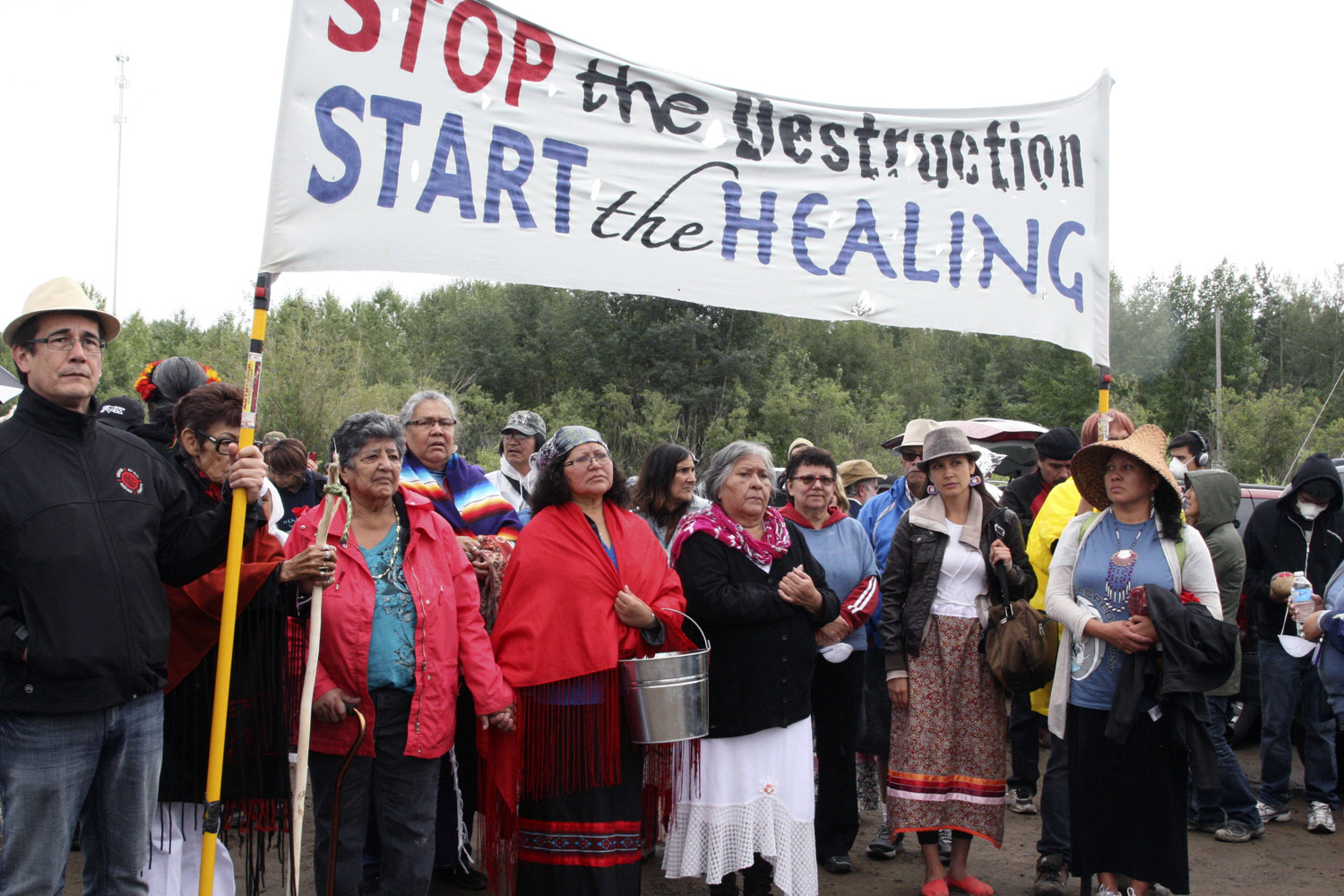 The pipeline would have cut across First Nations land and any spills would have been highly toxic to the local environment. In terms of profitability, returns on tar sands oil extraction and transportation are very low. This is likely to remain the case as oil prices are likely to remain low, with greater global energy efficiency and the switch to renewables.
The pipeline would have cut across First Nations land and any spills would have been highly toxic to the local environment. In terms of profitability, returns on tar sands oil extraction and transportation are very low. This is likely to remain the case as oil prices are likely to remain low, with greater global energy efficiency and the switch to renewables.
Critics of Biden’s decision argue that the pipeline project would have created some 5000 to 6000 temporary jobs in the USA during the two-year construction phase. Also they claim that it would have contributed to greater energy security for the USA.
 The second executive order was to rejoin the Paris Climate Agreement, a process that will take 30 days. Rejoining will involve commitments to cut greenhouse gas emissions and the adoption of various measures to bring this about. During the election campaign, Biden pledged to achieve economy-wide net-zero emissions no later than 2050. As we saw in the previous blog, under Biden the USA will play a leading role in the November 2021 UN COP26 climate change conference in Glasgow.
The second executive order was to rejoin the Paris Climate Agreement, a process that will take 30 days. Rejoining will involve commitments to cut greenhouse gas emissions and the adoption of various measures to bring this about. During the election campaign, Biden pledged to achieve economy-wide net-zero emissions no later than 2050. As we saw in the previous blog, under Biden the USA will play a leading role in the November 2021 UN COP26 climate change conference in Glasgow.
At present, the Paris agreement is for countries to aim to reach a peak of greenhouse gas emissions as soon as possible to achieve a climate neutral world by mid-century. Many countries have have made commitments about when they aim to achieve carbon neutrality, although concrete action is much more limited. It is hoped that the COP26 conference will lead to stronger commitments and actions and that the USA under Biden will play a leading part in driving this forward.
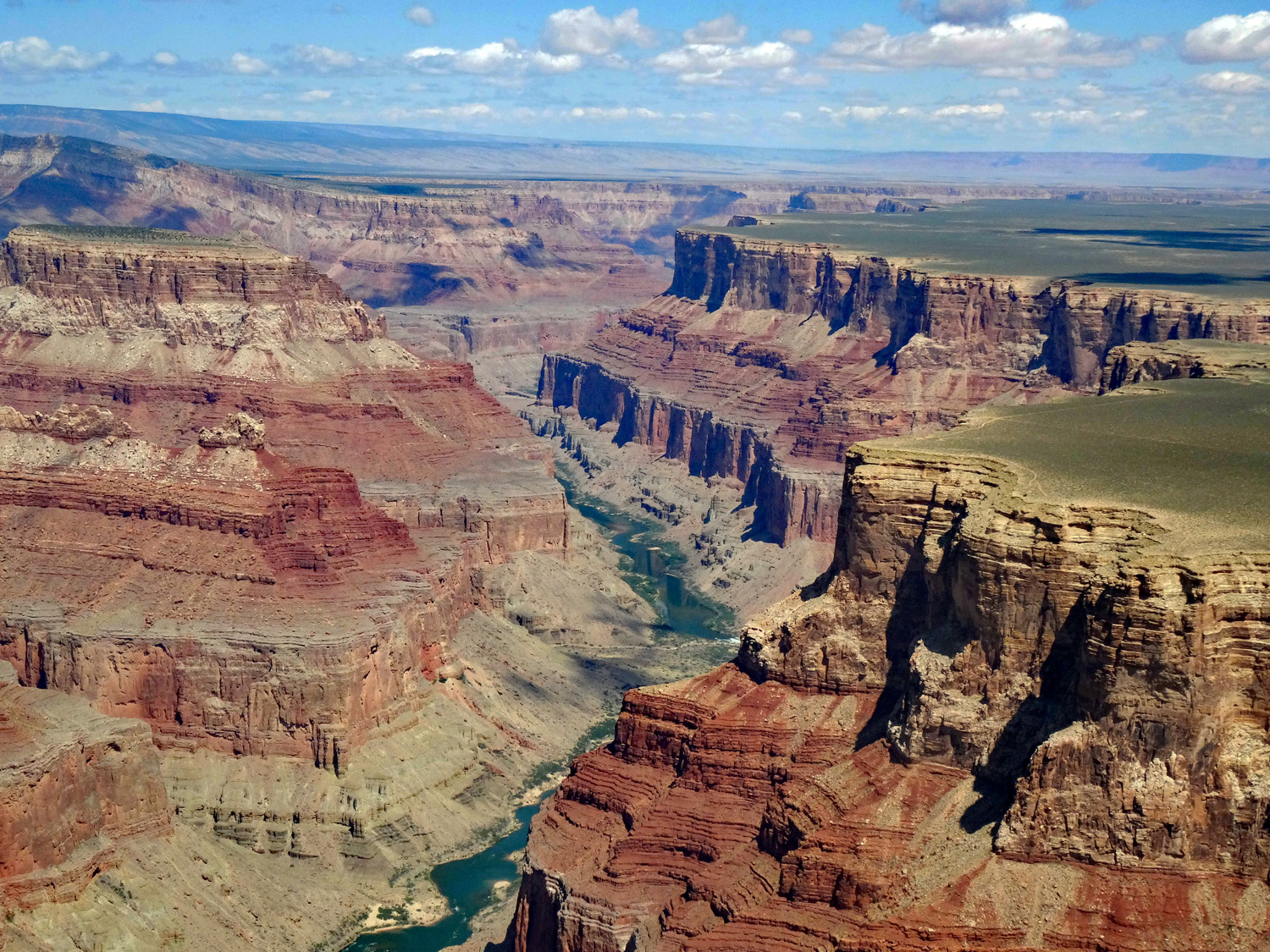 In addition, to cancelling the Keystone XL pipeline and rejoining the Paris Agreement, the executive orders reversed more than 100 other decisions with negative environmental effects taken by the Trump administration – many overturning environmental measures introduced by previous administrations, especially the Obama administration.
In addition, to cancelling the Keystone XL pipeline and rejoining the Paris Agreement, the executive orders reversed more than 100 other decisions with negative environmental effects taken by the Trump administration – many overturning environmental measures introduced by previous administrations, especially the Obama administration.
These orders included reversing the easing of vehicle emissions standards; stopping reductions in the area of two major national monuments (parks) in Utah; enforcing a temporary moratorium on oil and natural gas leases in Alaska’s Arctic National Wildlife Refuge; and re-establishing a working group on the social costs of greenhouse gasses.
Then there will be new measures, such as adopting strict fuel economy standards and investment in clean public transport. But it remains to be seen how far and fast the Biden administration can move to green the US economy. With the desire for bipartisanship and seeking an end to the divisive policies of Trump, there may be limits to what the new President can achieve in terms of new legislation, especially with a Senate divided 50:50 and only the casting vote of the chair (Kamala Harris as Vice-President) being in Democrat hands.
The articles below consider the various green policies and how likely they are to succeed in their objectives.
Articles
- Climate change: Biden’s first act sets tone for ambitious approach
BBC News, Matt McGrath (20/1/21)
- Biden nixes Keystone XL permit, halts Arctic refuge leasing
The Hill, Rachel Frazin (20/1/21)
- Biden’s return to Paris pact just a first step for U.S. climate action
Reuters, Megan Rowling (20/1/21)
- Court Decision Lets Biden Set New Emissions Rules To Meet Paris Agreement Climate Goals
Forbes, Allan Marks (20/1/21)
- Biden to ‘hit ground running’ as he rejoins Paris climate accords
The Guardian, Oliver Milman (19/1/21)
- What could a Biden-Harris administration mean for the planet?
Euronews, Marthe de Ferrer (20/1/21)
- Ask a Scientist: What Should the Biden Administration and Congress Do to Address the Climate Crisis?
ecoWatch, Elliott Negin (18/1/21)
- Biden marks Day One with burst of orders reversing Trump policies on climate and health
Science Business, Éanna Kelly (21/1/21)
- What Is the Paris Climate Agreement That Joe Biden Will Rejoin, Why Did Donald Trump Leave?
Newsweek, Kashmira Gander (18/1/21)
Questions
- Find out what other environmental policies are being pursued by President Biden and assess their likely effectiveness in achieving their environmental objectives.
- Would policies to reduce carbon emissions necessarily be desirable? How would you assess their desirability?
- When is it best to use the ‘precautionary principle’ when devising environmental policies?
- To what extent is game theory relevant in understanding the difficulties and opportunities of developing internationally agreed policies on carbon reduction?
- If the objective is to tackle global warming, is it better to seek international agreement on limiting the extent of global warming or international agreement on carbon reduction? Explain.
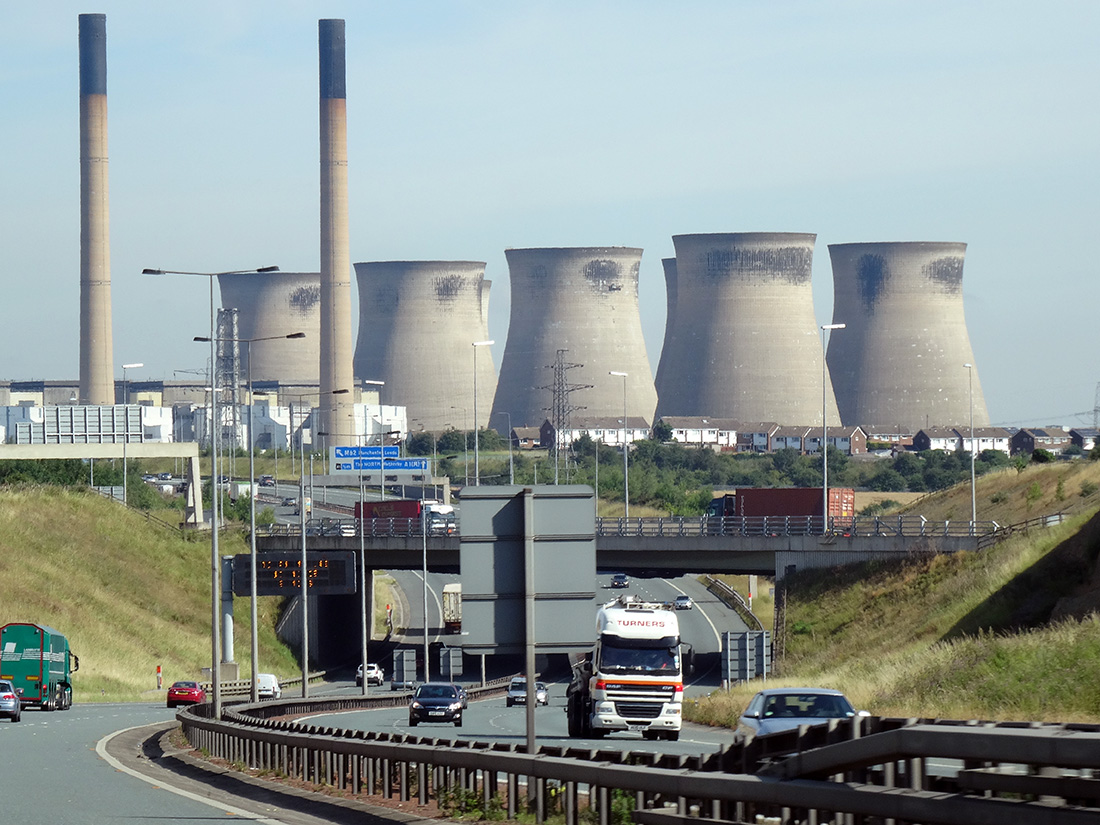 With the growing recognition of the global climate emergency (see also), attention is being increasingly focused on policies to tackle global warming.
With the growing recognition of the global climate emergency (see also), attention is being increasingly focused on policies to tackle global warming.
In the October version of its journal, Fiscal Monitor, the IMF argues that carbon taxes can play a major part in meeting the goal of achieving net zero carbon emissions by 2050 or earlier.
As the blog accompanying the journal states:
Global warming has become a clear and present threat. Actions and commitments to date have fallen short. The longer we wait, the greater the loss of life and damage to the world economy. Finance ministers must play a central role to champion and implement fiscal policies to curb climate change. To do so, they should reshape the tax system and fiscal policies to discourage carbon emissions from coal and other polluting fossil fuels.
The effect of a carbon tax on production
The argument is that carbon emissions represent a massive negative externality, where the costs are borne largely by people other than the emitters. Taxes can internalise these externalities. The effect would be to raise the price of carbon-emitting activities and reduce the quantity consumed and hence produced.
The diagram illustrates the argument. It takes the case of carbon emissions from coal-fired electricity generation in a large country. To keep the analysis simple, it is assumed that all electricity in the country is generated from coal-fired power stations and that there are many such power stations, making the market perfectly competitive.
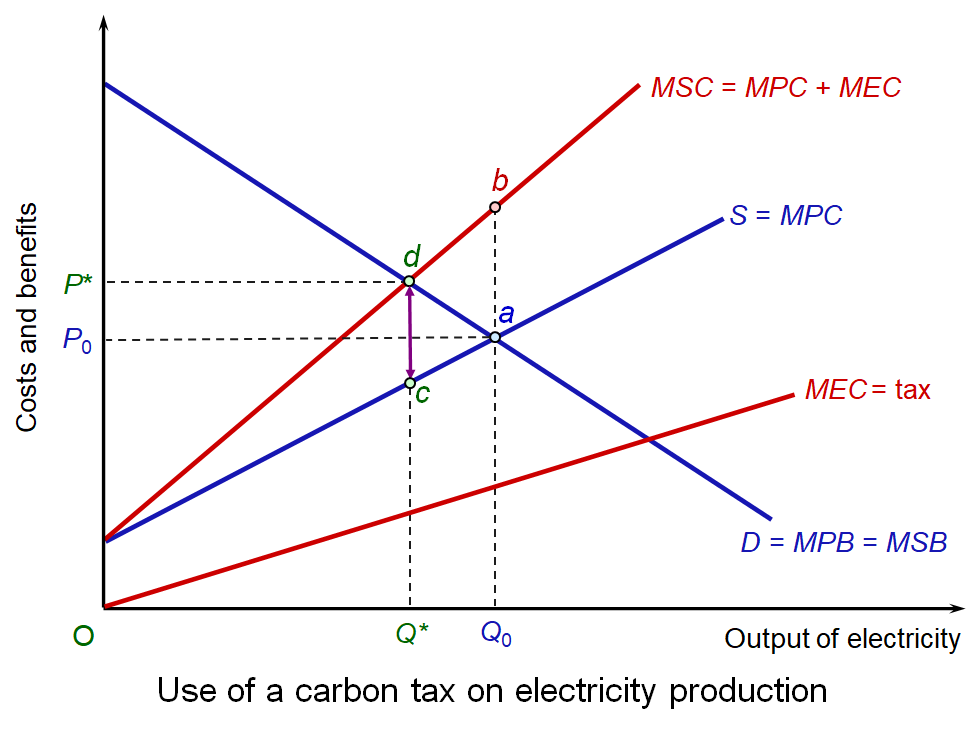 It is assumed that all the benefits from electricity production accrue solely to the consumers of electricity (i.e. there are no external benefits from consumption). Marginal private and marginal social benefits of the production of electricity are thus the same (MPB = MSB). The curve slopes downwards because, with a downward-sloping demand for electricity, higher output results in a lower marginal benefit (diminishing marginal utility).
It is assumed that all the benefits from electricity production accrue solely to the consumers of electricity (i.e. there are no external benefits from consumption). Marginal private and marginal social benefits of the production of electricity are thus the same (MPB = MSB). The curve slopes downwards because, with a downward-sloping demand for electricity, higher output results in a lower marginal benefit (diminishing marginal utility).
Competitive market forces, with producers and consumers responding only to private costs and benefits, will result in a market equilibrium at point a in the diagram: i.e. where demand equals supply. The market equilibrium price is P0 while the market equilibrium quantity is Q0. However the presence of external costs in production means that MSC > MPC. In other words, MEC = b – a.
The socially optimal output would be Q* where P = MSB = MSC, achieved at the socially optimal price of P*. This is illustrated at point d and clearly shows how external costs of production in a perfectly competitive market result in overproduction: i.e. Q0 > Q*. From society’s point of view, too much electricity is being produced and consumed.
If a carbon tax of d – c is imposed on the electricity producers, it will now be in producers’ interests to produce at Q*, where their new private marginal costs (including tax) equals their marginal private benefit.
Assessing the benefits of carbon taxes
The diagram shows the direct effect on production of electricity. With widespread carbon taxes, there would be similar direct effects on other industries that emit carbon, and also on consumers, faced with higher fuel prices. In the UK, for example, there are currently higher taxes on high-emissions vehicles than on low-emissions ones.
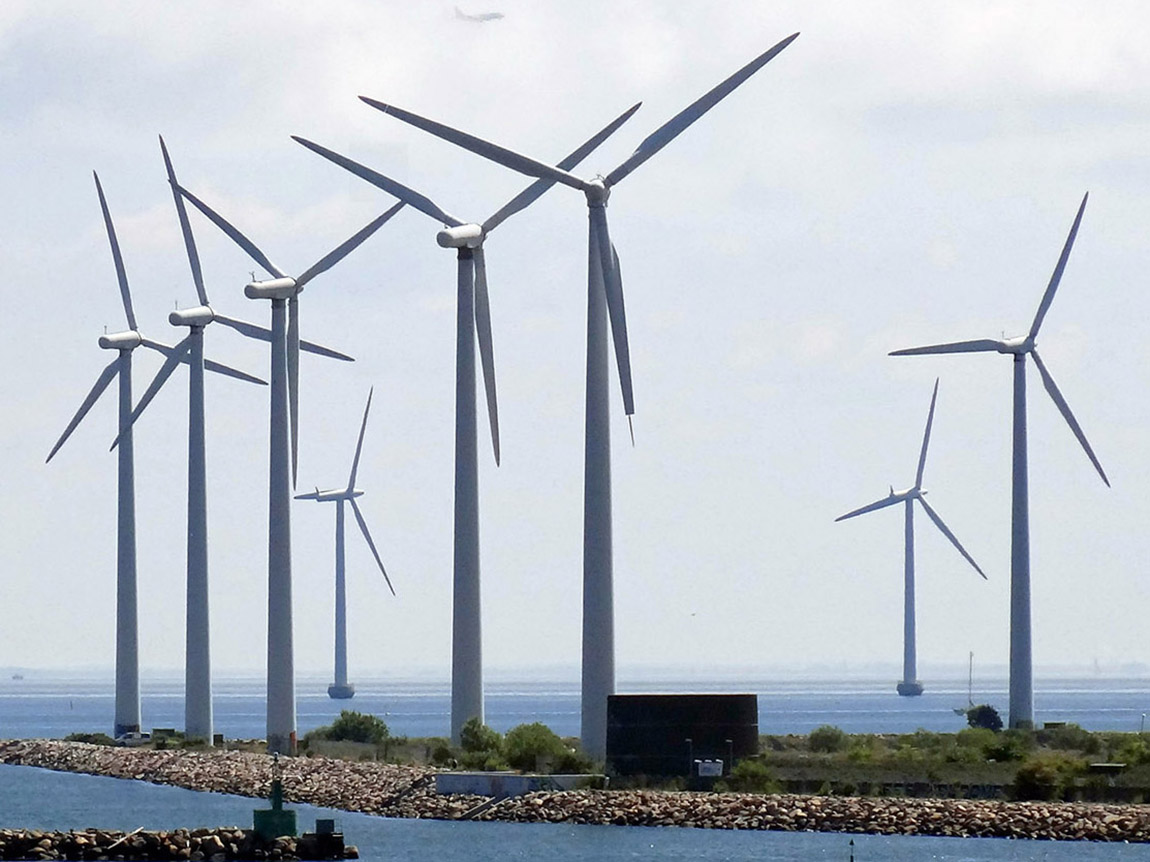 However, there are other effects of carbon taxes which contribute to the reduction in carbon emissions over the longer term. First, firms will have an incentive to invest in green energy production, such as wind, solar and hydro. Second, it will encourage R&D in green energy technology. Third, consumers will have an incentive to use less electricity by investing in more efficient appliances and home insulation and making an effort to turn off lights, the TV, computers and so on.
However, there are other effects of carbon taxes which contribute to the reduction in carbon emissions over the longer term. First, firms will have an incentive to invest in green energy production, such as wind, solar and hydro. Second, it will encourage R&D in green energy technology. Third, consumers will have an incentive to use less electricity by investing in more efficient appliances and home insulation and making an effort to turn off lights, the TV, computers and so on.
People may object to paying more for electricity, gas and motor fuel, but the tax revenues could be invested in cheaper clean public transport, home insulation and public services generally, such as health and education. This could be part of a policy of redistribution, with the tax revenues being spent on alleviating poverty. Alternatively, other taxes could be cut.
The IMF estimates that to restrict global warming to 2°C (a target seen as too modest by many environmentalists), large emitting countries ‘should introduce a carbon tax set to rise quickly to $75 a ton in 2030’.
This would mean household electric bills would go up by 43 per cent cumulatively over the next decade on average – more in countries that still rely heavily on coal in electricity generation, less elsewhere. Gasoline would cost 14 percent more on average.
It gives the example of Sweden, which has a carbon tax of $127 per ton. This has resulted in a 25% reduction in emissions since 1995, while the economy has expanded 75% since then.
Limits of carbon taxes
Although carbon taxes can make a significant contribution to combatting global warming, there are problems with their use.
First, it may be politically popular for governments not to impose them, or raise them, with politicians arguing that they are keen to help ‘struggling motorists’ or poor people ‘struggling to keep their homes warm’. In the UK, successive governments year after year have chosen not to raise road fuel taxes, despite a Fuel Price Escalator (replaced in 2011 by a Fuel Duty Stabiliser) designed to raise fuel taxes each year by more than inflation. Also, governments fear that higher energy prices would raise costs for their country’s industries, thereby damaging exports.
Second, it is difficult to measure the marginal external costs of CO2 emissions, which gives ammunition to those arguing to keep taxes low. In such cases it may be prudent, if politically possible, to set carbon taxes quite high.
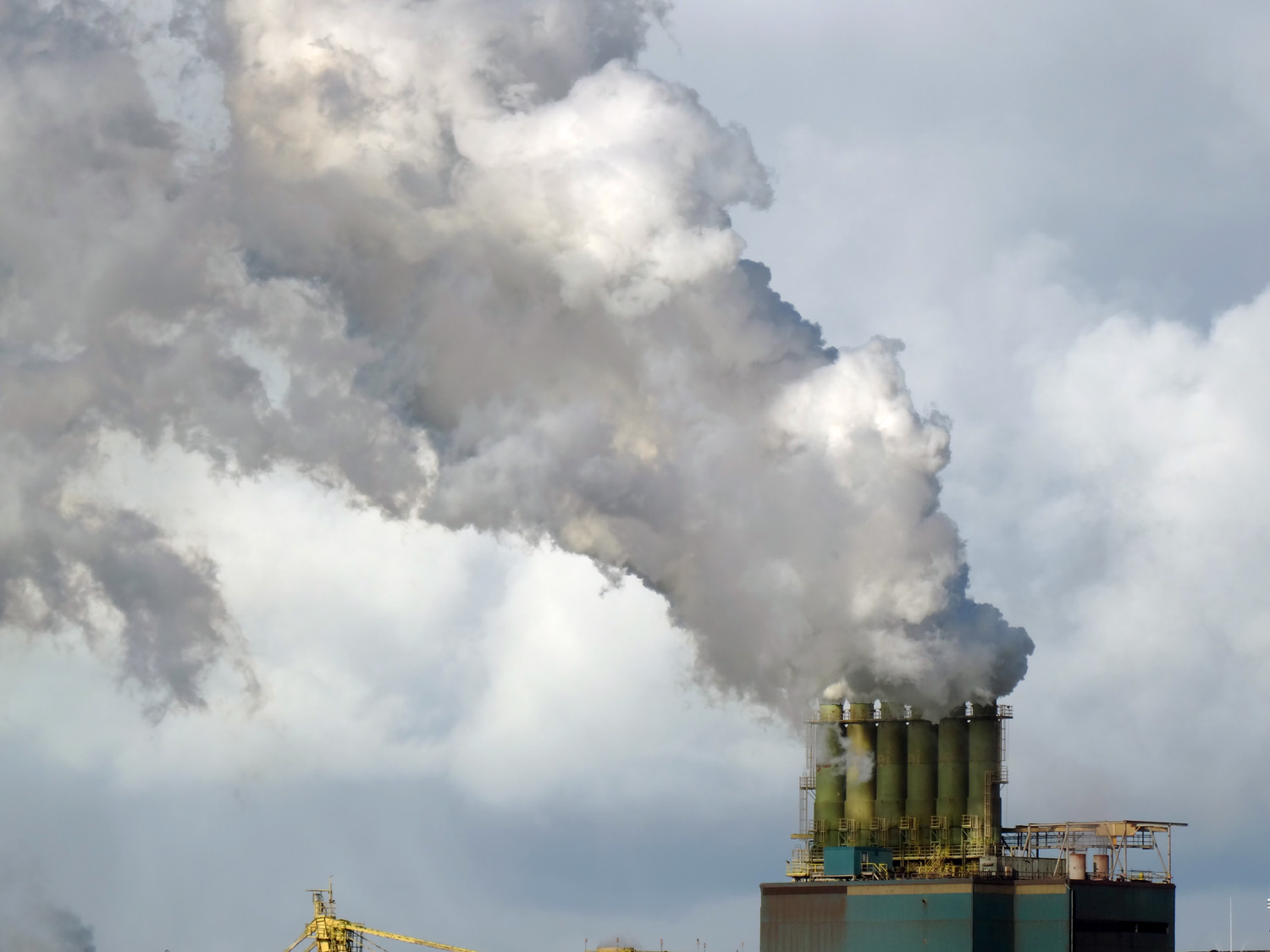 Third, they should not be seen as a sufficient policy on their own, but as just part of the solution to global warming. Legislation to prevent high emissions can be another powerful tool to prevent activities that have high carbon emissions. Examples include banning high-emission vehicles; a requirement for coal-fired power stations and carbon emitting factories to install CO2 scrubbers (filters); and tougher planning regulations for factories that emit carbon. Education to encourage people to cut their own personal use of fossil fuels is another powerful means of influencing behaviour.
Third, they should not be seen as a sufficient policy on their own, but as just part of the solution to global warming. Legislation to prevent high emissions can be another powerful tool to prevent activities that have high carbon emissions. Examples include banning high-emission vehicles; a requirement for coal-fired power stations and carbon emitting factories to install CO2 scrubbers (filters); and tougher planning regulations for factories that emit carbon. Education to encourage people to cut their own personal use of fossil fuels is another powerful means of influencing behaviour.
A cap-and-trade system, such as the European Emissions Trading Scheme would be an alternative means of cutting carbon efficiently. It involves setting quotas for emissions and allowing firms which manage to cut emissions to sell their surplus permits to less efficient firms. This puts a price pressure on firms to be more efficient. But the quotas (the ‘cap’) must be sufficiently tight if emissions are going to be cut to desired levels.
But, despite being just one possible policy, carbon taxes can make a significant contribution to combatting global warming.
Articles
 Fiscal Policies to Curb Climate Change
Fiscal Policies to Curb Climate ChangeIMF blog, Vitor Gaspar, Paolo Mauro, Ian Parry and Catherine Pattillo (10/10/19)
- Energy bills will have to rise sharply to avoid climate crisis, says IMF
The Guardian, Larry Elliott (10/10/19)
- Huge global carbon tax hike needed in next 10 years to head off climate disaster, says IMF
Independent, Chris Mooney and Andrew Freedman (11/10/19)
- World urgently needs to quicken steps to reduce global warming – IMF
Reuters, Lindsay Dunsmuir (10/10/19)
- The Case for a Goldilocks Carbon Tax
Forbes, Roger Pielke (13/9/19)
- The world needs a massive carbon tax in just 10 years to limit climate change, IMF says
Washington Post, Chris Mooney and Andrew Freedman (10/10/19)
- People like the idea of a carbon tax – if the money is put to good use
New Scientist, Michael Le Page (18/9/19)
- The IMF thinks carbon taxes will stop the climate crisis. That’s a terrible idea.
The Guardian, Kate Aronoff (12/10/19)
- Firms ignoring climate crisis will go bankrupt, says Mark Carney
The Guardian, Damian Carrington (13/10/19)
- How central banks can tackle climate change
Financial Times, The editorial board (31/10/19)
- World Economic Forum: Climate change action needed to avoid societal ‘collapse’ says minister
The National, UAE, Anna Zacharias (3/11/19)
- Riots and trade wars: Why carbon taxes will not solve climate crisis
Recharge, Leigh Collins (31/10/19) (Part 1)
- The plethora of effective alternatives to carbon pricing
Recharge, Leigh Collins (31/10/19) (Part 2)
- Are these the real reasons why Big Oil wants a carbon tax?
Recharge, Leigh Collins (31/10/19) (Part 3)
- Do we need carbon taxes in an era of cheap renewables?
Recharge, Leigh Collins (31/10/19) (Part 4)
Report
- How to Mitigate Climate Change
IMF Fiscal Monitor, Ian Parry (team leader), Thomas Baunsgaard, William Gbohoui, Raphael Lam, Victor Mylonas, Mehdi Raissi, Alpa Shah and Baoping Shang (October 2019)
Questions
- Draw a diagram to show how subsidies can lead to the optimum output of green energy.
- What are the political problems in introducing or raising carbon taxes? Examine possible solutions to these problems
- Choose two policies for reducing carbon emissions other than using carbon taxes? Compare their effectiveness with carbon taxes.
- How is game theory relevant to getting international agreement on cutting greenhouse gas emissions? Why is there likely to be a prisoners’ dilemma problem in reaching and sticking to such agreements? How might the problem of a prisoners’ dilemma be overcome in such circumstances?
 In December 2015, countries from around the world met in Paris at the United Nations Intergovernmental Panel on Climate Change (IPCC). The key element of the resulting Paris Agreement was to keep ‘global temperature rise this century well below 2 degrees Celsius above pre-industrial levels and to pursue efforts to limit the temperature increase even further to 1.5 degrees Celsius.’ At the same time it was agreed that the IPCC would conduct an analysis of what would need to be done to limit global warming to 1.5°C. The IPPC has just published its report.
In December 2015, countries from around the world met in Paris at the United Nations Intergovernmental Panel on Climate Change (IPCC). The key element of the resulting Paris Agreement was to keep ‘global temperature rise this century well below 2 degrees Celsius above pre-industrial levels and to pursue efforts to limit the temperature increase even further to 1.5 degrees Celsius.’ At the same time it was agreed that the IPCC would conduct an analysis of what would need to be done to limit global warming to 1.5°C. The IPPC has just published its report.
The report, based on more than 6000 scientific studies, has been compiled by more than 80 of the world’s top climate scientists. It states that, with no additional action to mitigate climate change beyond that committed in the Paris Agreement, global temperatures are likely to rise to the 1.5°C point somewhere between 2030 and 2040 and then continue rising above that, reaching 3°C by the end of the century.
 According to the report, the effects we are already seeing will accelerate. Sea levels will rise as land ice caps and glaciers melt, threatening low lying coastal areas; droughts and floods will become more severe; hurricanes and cyclones will become stronger; the habits of many animals will become degraded and species will become extinct; more coral reefs will die and fish species disappear; more land will become uninhabitable; more displacement and migration will take place, leading to political tensions and worse.
According to the report, the effects we are already seeing will accelerate. Sea levels will rise as land ice caps and glaciers melt, threatening low lying coastal areas; droughts and floods will become more severe; hurricanes and cyclones will become stronger; the habits of many animals will become degraded and species will become extinct; more coral reefs will die and fish species disappear; more land will become uninhabitable; more displacement and migration will take place, leading to political tensions and worse.
Two tragedies

The problem of greenhouse gas emissions and global warming is a classic case of the tragedy of the commons. This is where people overuse common resources, such as open grazing land, fishing grounds, or, in this case, the atmosphere as a dump for emissions. They do so because there is little, if any, direct short-term cost to themselves. Instead, the bulk of the cost is borne by others – especially in the future.
There is another related tragedy, which has been dubbed the ‘tragedy of incumbents’. This is a political problem where people in power  want to retain that power and do so by appealing to short-term selfish interests. The Trump administration lauds the use of energy as helping to drive the US economy and make people better off. To paraphrase Donald Trump ‘Climate change may be happening, but, hey, let’s not beat ourselves up about it and wear hair shirts. What we do will have little or no effect compared with what’s happening in China and India. The USA is much better off with a strong automobile, oil and power sector.’
want to retain that power and do so by appealing to short-term selfish interests. The Trump administration lauds the use of energy as helping to drive the US economy and make people better off. To paraphrase Donald Trump ‘Climate change may be happening, but, hey, let’s not beat ourselves up about it and wear hair shirts. What we do will have little or no effect compared with what’s happening in China and India. The USA is much better off with a strong automobile, oil and power sector.’
What’s to be done?
According to the IPCC report, if warming is not to exceed 1.5℃, greenhouse gas emissions must be reduced by 45% by 2030 and by 100% by around 2050. But is this achievable?
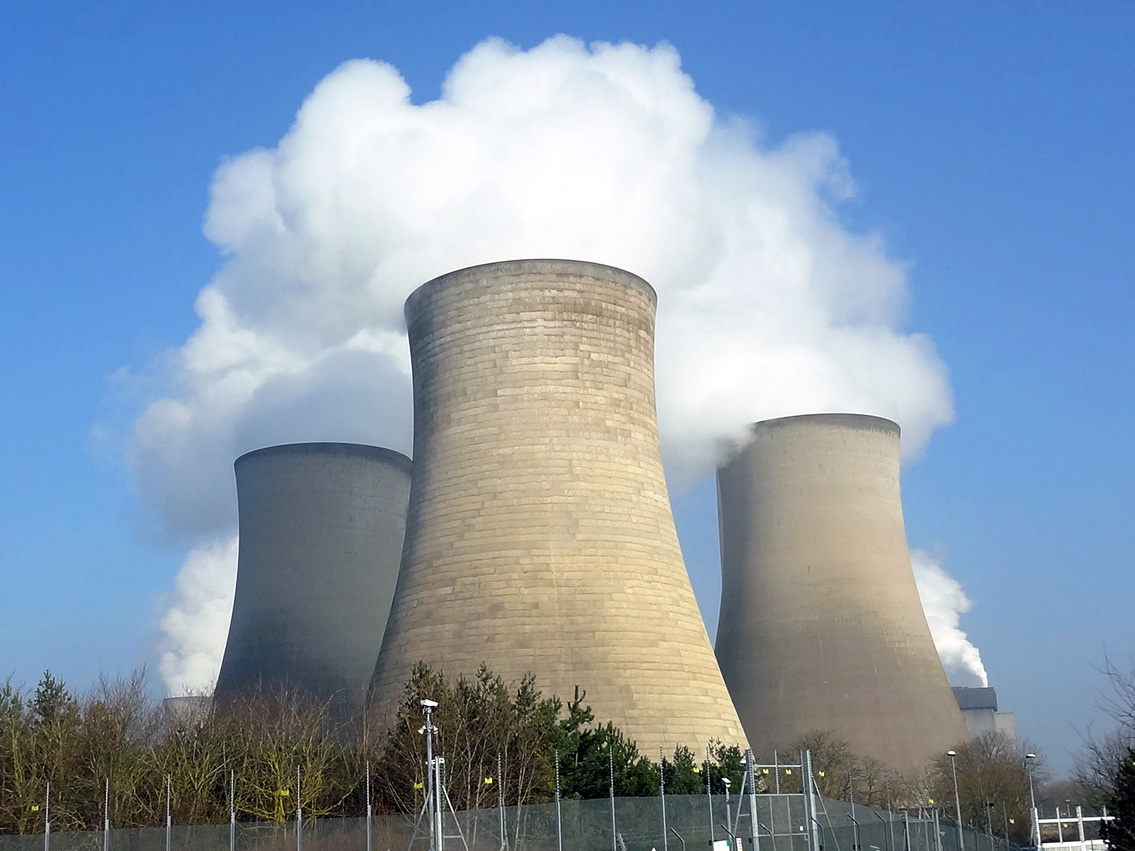 The commitments made in the Paris Agreement will not be nearly enough to achieve these reductions. There needs to be a massive movement away from fossil fuels, with between 70% and 85% of global electricity production being from renewables by 2050. There needs to be huge investment in green technology for power generation, transport and industrial production.
The commitments made in the Paris Agreement will not be nearly enough to achieve these reductions. There needs to be a massive movement away from fossil fuels, with between 70% and 85% of global electricity production being from renewables by 2050. There needs to be huge investment in green technology for power generation, transport and industrial production.
In addition, the report recommends investing in atmospheric carbon extraction technologies. Other policies to reduce carbon include massive reforestation.
Both these types of policies involve governments taking action, whether through increased carbon taxes on either producers or consumer or both, or through increased subsidies for renewables and other alternatives, or through the use of cap and trade with emissions allocations (either given by government or sold at auction) and carbon trading, or through the use of regulation to prohibit or limit behaviour that leads to emissions. The issue, of course, is whether governments have the will to do anything. Some governments do, but with the election of populist leaders, such as President Trump in the USA, and probably Jair Bolsonaro in Brazil, and with sceptical governments in other countries, such as Australia, this puts even more onus on other governments.
Another avenue is a change in people’s attitudes, which may be influenced by education, governments, pressure groups, news media, etc. For example, if people could be persuaded to eat less meat, drive less (for example, by taking public transport, walking, cycling, car sharing or living nearer to their work), go on fewer holidays, heat their houses less, move to smaller homes, install better insulation, etc., these would all reduce greenhouse gas emissions.
 Finally, there is the hope that the market may provide part of the solution. The cost of generating electricity from renewables is coming down and is becoming increasingly competitive with electricity generated from fossil fuels. Electric cars are coming down in price as battery technology develops; also, battery capacity is increasing and recharging is becoming quicker, helping encourage the switch from petrol and diesel cars to electric and hybrid cars. At the same time, various industrial processes are becoming more fuel efficient. But these developments, although helpful, will not be enough to achieve the 1.5°C target on their own.
Finally, there is the hope that the market may provide part of the solution. The cost of generating electricity from renewables is coming down and is becoming increasingly competitive with electricity generated from fossil fuels. Electric cars are coming down in price as battery technology develops; also, battery capacity is increasing and recharging is becoming quicker, helping encourage the switch from petrol and diesel cars to electric and hybrid cars. At the same time, various industrial processes are becoming more fuel efficient. But these developments, although helpful, will not be enough to achieve the 1.5°C target on their own.
Videos and audio
Articles
- We must reduce greenhouse gas emissions to net zero or face more floods
The Guardian, Nicholas Stern (8/10/18)
- Rapid, unprecedented change needed to halt global warming – U.N.
Reuters, Nina Chestney and Jane Chung (8/10/18)
- Final call to save the world from ‘climate catastrophe’
BBC News, Matt McGrath (8/10/18)
- New UN report outlines ‘urgent, transformational’ change needed to hold global warming to 1.5°C
The Conversation, Mark Howden and Rebecca Colvin (8/10/18)
- Earth’s temperature to rise 1.5C as early as 2030 amid dire warnings from UN climate panel
The Telegraph (8/10/18)
- UN Climate Change Report: Everything You Need To Know
Huffington Post, Isabel Togoh (8/10/18)
- Thirty years of the IPCC
Physics World (8/10/18)
- 13 things you should know about 1.5
Unearthed, Zach Boren (8/10/18)
- Climate change impacts worse than expected, global report warns
National Geographic, Stephen Leahy (7/10/18)
- World to miss Paris climate targets by wide margin, says UN panel
Financial Times, Leslie Hook (8/10/18)
- We have 12 years to limit climate change catastrophe, warns UN
The Guardian, Jonathan Watts (8/10/18)
- Limiting warming to 1.5C is possible – if there is political will
The Guardian, Christiana Figueres (8/10/18)
- The Trump administration has entered Stage 5 climate denial
The Guardian, Dana Nuccitelli (8/10/18)
- ‘Unprecedented changes’ needed to stop global warming as UN report reveals islands starting to vanish and coral reefs dying
Independent, Josh Gabbatiss (8/10/18)
Report
Questions
- Explain the extent to which the problem of global warming is an example of the tragedy of the commons. What other examples are there of the tragedy?
- Explain the meaning of the tragedy of the incumbents and its impact on climate change? Does the length of the electoral cycle exacerbate the problem?
- With the costs of low or zero carbon technology for energy and transport coming down, is there as case for doing nothing in response to the problem of global warming?
- Examine the case for and against using taxes and subsidies to tackle global warming.
- Examine the case for and against using regulation to tackle global warming.
- Examine the case for and against using cap-and-trade systems to tackle global warming.
- Is there a prisoners’ dilemma problem in getting governments to adopt policies to tackle climate change?
- What would be the motivation for individuals to ‘do their bit’ to tackle climate change? Other than altering prices or using regulation, how might the government or other agencies set about persuading people to ‘be more green’?
- If you were doing a cost–benefit analysis of some project that will have beneficial environmental impacts in the future, how would you set about adjusting the values of these benefits for the fact that they occur in the future and not now?
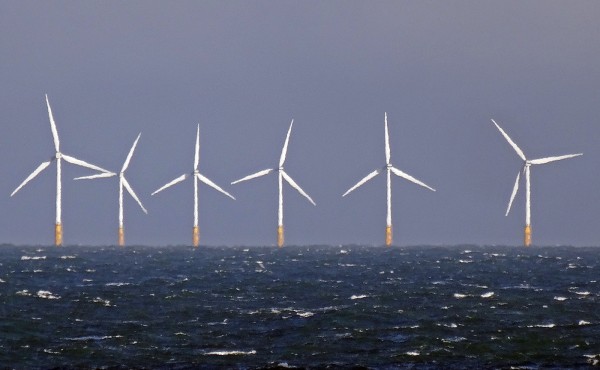 After two weeks of negotiations between the 195 countries attending the COP21 climate change conference in Paris, a deal has been reached on tackling climate change. Although the deal still has to be ratified by countries, this is a major step forward in limiting global warming. Before it can formally come into force, it must have been ratified by at least 55 countries, accounting for at least 55% of global greenhouse gas emissions.
After two weeks of negotiations between the 195 countries attending the COP21 climate change conference in Paris, a deal has been reached on tackling climate change. Although the deal still has to be ratified by countries, this is a major step forward in limiting global warming. Before it can formally come into force, it must have been ratified by at least 55 countries, accounting for at least 55% of global greenhouse gas emissions.
The deal goes much further than previous agreements and includes the following:
- A limit on the increase in global temperatures to ‘well below’ 2°C above pre-industrial levels and efforts pursued to limit it to 1.5°C.
- A recognition that the pledges already made ahead of the conference by 186 countries and incorporated into the agreement are insufficient and will only limit global temperature rise to 2.7°C at best.
- Countries to update their emissions reductions commitments every five years – the first being in 2020. Such revised commitments should then be legally binding.
- A global ‘stocktake’ in 2023, and every five years thereafter, to monitor countries’ progress in meeting their commitments and to encourage them to make deeper cuts in emissions to reach the 1.5°C goal. This requires a process of measurement and verification of countries’ emissions.
- To reach a peak in greenhouse gas emissions as soon as possible and then to begin reducing them and to achieve a balance between sources and sinks of greenhouse gases (i.e. zero net emissions) in the second half of this century.
- Developed countries to provide the poorest developing countries with $100bn per year by 2020 to help them reduce emissions. This was agreed in Copenhagen, but will now be continued from 2020 to 2025, and by 2025 a new goal above $100bn per year will be agreed.
- The development of market mechanisms that would award tradable credits for green projects and emissions reductions.
- A recognition that the ‘loss and damage’ associated with climate-related disasters can be serious for many vulnerable developing countries (such as low-lying island states) and that this may require compensation. However, there is no legal liability on developed countries to provide such compensation.
Perhaps the major achievement at the conference was a universal recognition that the problem of global warming is serious and that action needs to be taken. Mutual self interest was the driving force in reaching the agreement, and although it is less binding on countries than many would have liked, it does mark a significant step forward in tackling climate change.
But why did the conference not go further? Why, if there was general agreement that global warming should be tackled and that global temperature rise should ideally be capped at 1.5°C, was there not a binding agreement on each country to apply this cap?
There are two reasons.
First, it is very difficult to predict the exact relationship, including its timing, between emissions and global temperature rise. Even if you could make limits to emissions binding, you could not make global temperature rise binding.
 Second, even if there is general agreement about how much emissions should be reduced, there is no general agreement on the distribution of these reductions. Many countries want to do less themselves and others to do more. More specifically, poor countries want rich countries to do all the cutting while many continue to build more coal-fired power stations to provide the electricity to power economic development. The rich countries want the developing countries, especially the larger ones, such as China, India and Brazil to reduce their emissions, or at least the growth in their emissions.
Second, even if there is general agreement about how much emissions should be reduced, there is no general agreement on the distribution of these reductions. Many countries want to do less themselves and others to do more. More specifically, poor countries want rich countries to do all the cutting while many continue to build more coal-fired power stations to provide the electricity to power economic development. The rich countries want the developing countries, especially the larger ones, such as China, India and Brazil to reduce their emissions, or at least the growth in their emissions.
Then there is the difference between what countries vaguely pledge at a global conference and what they actually do domestically. Many developed countries are keen to take advantage of currently cheap fossil fuels to power economic growth. They are also still investing in alternative sources of fossil fuels, such as through fracking.
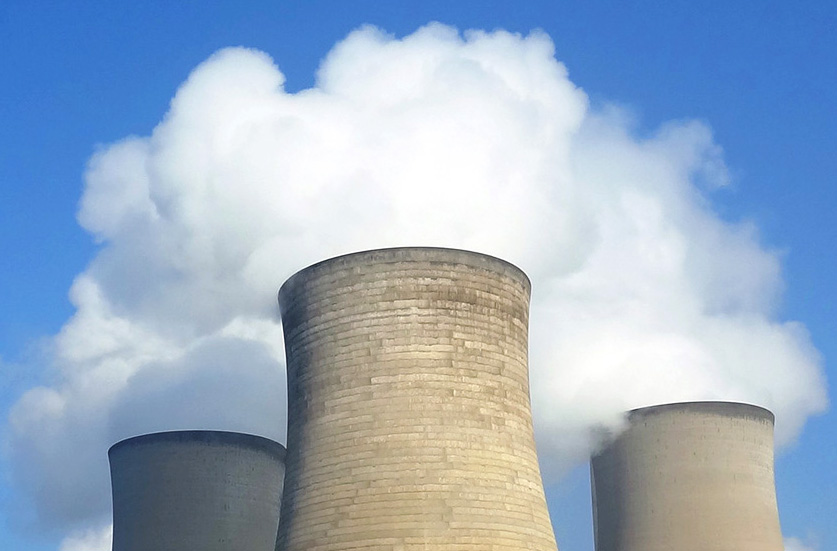 As we said in the previous blog, game theory can shed some useful insights into the nature and outcome of climate negotiations. ‘The global optimum may be for a strong agreement, binding on all countries. The Nash equilibrium, however, may be a situation where countries push for their own interests at the expense of others, with the final agreement being much more minimalistic.’
As we said in the previous blog, game theory can shed some useful insights into the nature and outcome of climate negotiations. ‘The global optimum may be for a strong agreement, binding on all countries. The Nash equilibrium, however, may be a situation where countries push for their own interests at the expense of others, with the final agreement being much more minimalistic.’
‘Minimalistic’ may be too strong a description of the outcomes of the Paris conference. But they could have been stronger. Nevertheless, judged by the outcomes of previous climate conferences, the deal could still be described as ‘historic’.
Videos
 With landmark climate accord, world marks turn from fossil fuels Reuters (13/12/15)
With landmark climate accord, world marks turn from fossil fuels Reuters (13/12/15)
 COP21 climate change summit reaches deal in Paris BBC News (13/12/15)
COP21 climate change summit reaches deal in Paris BBC News (13/12/15)
 COP21: Paris climate deal is ‘best chance to save planet’ BBC News (13/12/15)
COP21: Paris climate deal is ‘best chance to save planet’ BBC News (13/12/15)
 COP21: Climate change deal’s winners and losers BBC News, Matt McGrath (13/12/15)
COP21: Climate change deal’s winners and losers BBC News, Matt McGrath (13/12/15)
 The Five Key Decisions Made in the UN Climate Deal in Paris Bloomberg, video: Nathaniel Bullard; article: Ewa Krukowska and Alex Morales (12/12/15)
The Five Key Decisions Made in the UN Climate Deal in Paris Bloomberg, video: Nathaniel Bullard; article: Ewa Krukowska and Alex Morales (12/12/15)
 The key factors in getting a deal in Paris BBC News on YouTube, Tom Burke (13/12/15)
The key factors in getting a deal in Paris BBC News on YouTube, Tom Burke (13/12/15)
Articles
COP21 agreement: All you need to know about Paris climate change deal Hindustan Times, Chetan Chauhan (13/12/15)
COP21: Paris agreement formally adopted Financial Times, Pilita Clark and Michael Stothard (12/12/15)
Let’s hail the Paris climate change agreement and get to work Financial Times, Jeffrey Sachs (12/12/15)
COP21: Public-private collaboration key to climate targets Financial Times, Nicholas Stern (13/12/15)
Paris climate change agreement: the deal at a glance The Telegraph, Emily Gosden (12/12/15)
Climate Accord Is a Healing Step, if Not a Cure New York Times, Justin Gillis (12/12/15)
Paris Agreement Ushers in End of the Fossil Fuel Era Slate, Eric Holthaus (12/12/15)
Paris Agreement: the reaction Business Green, James Murray and Jessica Shankleman (12/12/15)
World’s First Global Deal to Combat Climate Change Adopted in Paris Scientific American, David Biello (12/12/15)
COP21: Paris climate deal ‘our best chance to save the planet’, says Obama Independent, Tom Bawden (13/12/15)
Grand promises of Paris climate deal undermined by squalid retrenchments The Guardian, George Monbiot (12/12/15)
Paris Agreement on climate change: the good, the bad, and the ugly The Conversation, Henrik Selin and Adil Najam (14/12/15)
COP21: James Hansen, the father of climate change awareness, claims Paris agreement is a ‘fraud’ Independent, Caroline Mortimer (14/12/15)
Paris climate agreement: More hot air won’t save us from oblivion Sydney Morning Herald, Peter Hartcher (15/12/15)
Draft Agreement
Adoption of the Paris Agreement United Nations Framework Convention on Climate Change (12/12/15)
Questions
- Could the market ever lead to a reduction in greenhouse gas emissions? Explain.
- What are the main strengths and weaknesses of the Paris agreement?
- Is it in rich countries’ interests to help poorer countries to achieve reductions in greenhouse gas emissions?
- How might countries reduce the production of fossil fuels? Are they likely to want to do this? Explain.
- Is a ‘cap and trade’ (tradable permits) system (a) an effective means of reducing emissions; (b) an efficient system?
- What is the best way of financing investment in renewable energy?
 The UN’s Intergovernmental Panel on Climate Change (IPCC) has just published the first part of its latest seven-yearly Assessment Report (AR6) on global warming and its consequences (see video summary). The report was prepared by 234 scientists from 66 countries and endorsed by 195 governments. Its forecasts are stark. World temperatures, already 1.1C above pre-industrial levels, will continue to rise. This will bring further rises in sea levels and more extreme weather conditions with more droughts, floods, wildfires, hurricanes and glacial melting.
The UN’s Intergovernmental Panel on Climate Change (IPCC) has just published the first part of its latest seven-yearly Assessment Report (AR6) on global warming and its consequences (see video summary). The report was prepared by 234 scientists from 66 countries and endorsed by 195 governments. Its forecasts are stark. World temperatures, already 1.1C above pre-industrial levels, will continue to rise. This will bring further rises in sea levels and more extreme weather conditions with more droughts, floods, wildfires, hurricanes and glacial melting. The articles below go into considerable detail on the different scenarios and their consequences. Here we focus on the economic causes of the crisis and the policies that need to be pursued.
The articles below go into considerable detail on the different scenarios and their consequences. Here we focus on the economic causes of the crisis and the policies that need to be pursued.  The market fails to achieve a socially efficient use of the environment because large parts of the environment are a common resource (such as the air and the oceans), because production or consumption often generates environmental externalities, because of ignorance of the environmental effects of our actions, and because of a lack of concern for future generations.
The market fails to achieve a socially efficient use of the environment because large parts of the environment are a common resource (such as the air and the oceans), because production or consumption often generates environmental externalities, because of ignorance of the environmental effects of our actions, and because of a lack of concern for future generations. At the COP26 meeting in Glasgow in November, countries will gather to make commitments to tackle climate change. The IPCC report is clear: although we are on course for a 1.5C rise in global temperatures by 2040, it is not too late to take action to prevent rises going much higher: to avoid the attendant damage to the planet and changes to weather systems, and the accompanying costs to lives and livelihoods. Carbon neutrality must be reached as soon as possible and this requires strong action now. It is not enough for government to set dates for achieving carbon neutrality, they must adopt policies that immediately begin reducing emissions.
At the COP26 meeting in Glasgow in November, countries will gather to make commitments to tackle climate change. The IPCC report is clear: although we are on course for a 1.5C rise in global temperatures by 2040, it is not too late to take action to prevent rises going much higher: to avoid the attendant damage to the planet and changes to weather systems, and the accompanying costs to lives and livelihoods. Carbon neutrality must be reached as soon as possible and this requires strong action now. It is not enough for government to set dates for achieving carbon neutrality, they must adopt policies that immediately begin reducing emissions. Some climate changes now irreversible, says stark UN report
Some climate changes now irreversible, says stark UN report Back in November, when Joe Biden had just been elected, we considered some of his proposed policies to tackle climate change (see
Back in November, when Joe Biden had just been elected, we considered some of his proposed policies to tackle climate change (see  The pipeline would have cut across First Nations land and any spills would have been highly toxic to the local environment. In terms of profitability, returns on tar sands oil extraction and transportation are very low. This is likely to remain the case as oil prices are likely to remain low, with greater global energy efficiency and the switch to renewables.
The pipeline would have cut across First Nations land and any spills would have been highly toxic to the local environment. In terms of profitability, returns on tar sands oil extraction and transportation are very low. This is likely to remain the case as oil prices are likely to remain low, with greater global energy efficiency and the switch to renewables.  The second executive order was to rejoin the
The second executive order was to rejoin the  In addition, to cancelling the Keystone XL pipeline and rejoining the Paris Agreement, the executive orders reversed more than 100 other decisions with negative environmental effects taken by the Trump administration – many overturning environmental measures introduced by previous administrations, especially the Obama administration.
In addition, to cancelling the Keystone XL pipeline and rejoining the Paris Agreement, the executive orders reversed more than 100 other decisions with negative environmental effects taken by the Trump administration – many overturning environmental measures introduced by previous administrations, especially the Obama administration.  With the growing recognition of the
With the growing recognition of the  It is assumed that all the benefits from electricity production accrue solely to the consumers of electricity (i.e. there are no external benefits from consumption). Marginal private and marginal social benefits of the production of electricity are thus the same (MPB = MSB). The curve slopes downwards because, with a downward-sloping demand for electricity, higher output results in a lower marginal benefit (diminishing marginal utility).
It is assumed that all the benefits from electricity production accrue solely to the consumers of electricity (i.e. there are no external benefits from consumption). Marginal private and marginal social benefits of the production of electricity are thus the same (MPB = MSB). The curve slopes downwards because, with a downward-sloping demand for electricity, higher output results in a lower marginal benefit (diminishing marginal utility). However, there are other effects of carbon taxes which contribute to the reduction in carbon emissions over the longer term. First, firms will have an incentive to invest in green energy production, such as wind, solar and hydro. Second, it will encourage R&D in green energy technology. Third, consumers will have an incentive to use less electricity by investing in more efficient appliances and home insulation and making an effort to turn off lights, the TV, computers and so on.
However, there are other effects of carbon taxes which contribute to the reduction in carbon emissions over the longer term. First, firms will have an incentive to invest in green energy production, such as wind, solar and hydro. Second, it will encourage R&D in green energy technology. Third, consumers will have an incentive to use less electricity by investing in more efficient appliances and home insulation and making an effort to turn off lights, the TV, computers and so on. Third, they should not be seen as a sufficient policy on their own, but as just part of the solution to global warming. Legislation to prevent high emissions can be another powerful tool to prevent activities that have high carbon emissions. Examples include banning high-emission vehicles; a requirement for coal-fired power stations and carbon emitting factories to install CO2
Third, they should not be seen as a sufficient policy on their own, but as just part of the solution to global warming. Legislation to prevent high emissions can be another powerful tool to prevent activities that have high carbon emissions. Examples include banning high-emission vehicles; a requirement for coal-fired power stations and carbon emitting factories to install CO2  In December 2015, countries from around the world met in Paris at the United Nations Intergovernmental Panel on Climate Change (IPCC). The key element of the resulting
In December 2015, countries from around the world met in Paris at the United Nations Intergovernmental Panel on Climate Change (IPCC). The key element of the resulting  According to the report, the effects we are already seeing will accelerate. Sea levels will rise as land ice caps and glaciers melt, threatening low lying coastal areas; droughts and floods will become more severe; hurricanes and cyclones will become stronger; the habits of many animals will become degraded and species will become extinct; more coral reefs will die and fish species disappear; more land will become uninhabitable; more displacement and migration will take place, leading to political tensions and worse.
According to the report, the effects we are already seeing will accelerate. Sea levels will rise as land ice caps and glaciers melt, threatening low lying coastal areas; droughts and floods will become more severe; hurricanes and cyclones will become stronger; the habits of many animals will become degraded and species will become extinct; more coral reefs will die and fish species disappear; more land will become uninhabitable; more displacement and migration will take place, leading to political tensions and worse.
 want to retain that power and do so by appealing to short-term selfish interests. The Trump administration lauds the use of energy as helping to drive the US economy and make people better off. To
want to retain that power and do so by appealing to short-term selfish interests. The Trump administration lauds the use of energy as helping to drive the US economy and make people better off. To  The commitments made in the
The commitments made in the  Finally, there is the hope that the market may provide part of the solution. The cost of generating electricity from renewables is coming down and is becoming increasingly competitive with electricity generated from fossil fuels. Electric cars are coming down in price as battery technology develops; also, battery capacity is increasing and recharging is becoming quicker, helping encourage the switch from petrol and diesel cars to electric and hybrid cars. At the same time, various industrial processes are becoming more fuel efficient. But these developments, although helpful, will not be enough to achieve the 1.5°C target on their own.
Finally, there is the hope that the market may provide part of the solution. The cost of generating electricity from renewables is coming down and is becoming increasingly competitive with electricity generated from fossil fuels. Electric cars are coming down in price as battery technology develops; also, battery capacity is increasing and recharging is becoming quicker, helping encourage the switch from petrol and diesel cars to electric and hybrid cars. At the same time, various industrial processes are becoming more fuel efficient. But these developments, although helpful, will not be enough to achieve the 1.5°C target on their own.

